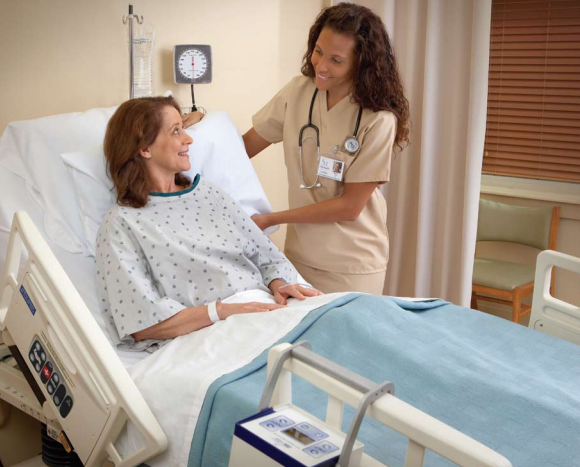From long-term care (LTC) facilities, to rehabilitation hospitals, to short-term acute care, care staffs are constantly on their toes attending to patient and resident healthcare needs. Is there ever enough time in a shift, a day or a week, even with all the advantages of new processes and technologies?
Above and beyond the primary reason requiring a person’s medical care, she or he faces another potentially serious health risk no matter what the care setting: pressure injuries. A look at the statistics brings the challenge – or what some call a crisis – into clear view:
- More than 2.5 million people in the United States develop pressure ulcers each year1
- Annually, pressure injury treatment costs our country at least 26.8 billion dollars2
- As of September 2020, 5 to 15 percent of hospitalized patients suffered from pressure injuries3
- The incidence of pressure injuries ranges from 8.2 to 32.2 percent in U.S. long-term care facilities4
- Each year, more than 17,000 lawsuits are filed nationwide due to pressure injuries, second only to wrongful death and more than falls5
- Pressure ulcers directly result in some 60,000 U.S. deaths annually6
- While other conditions acquired in healthcare facilities continue to decline, pressure injuries are going in the opposite direction7
- At least 700,000 Americans recovering from COVID-19 will require inpatient rehabilitative care8
The people behind these statistics – caregivers, patients and residents – must be our focus. There are ways to relieve caregiver burdens, while increasing patient and resident safety and comfort. Let’s look at some of the developments aimed at preventing the medical complication of pressure injuries.
Prevention Requires Knowledge, Training, Technologies, Cultural Pivots
Given the risk factors for pressure injuries – among them immobility, reduced circulation, malnutrition, age, sensory loss, cardiovascular disease, diabetes and incontinence – thoroughly knowing a patient’s or resident’s medical history is critical in the effort to prevent such injuries.9 Does that person have a previous wound history? Are there chronic medical conditions to consider? Is there already evidence of muscle atrophy? With complete medical records, along with input from primary care physicians, specialists and family/personal caregivers, medical personnel in hospitals, short-term rehab and long-term care can become aware of the potential risks…so they may seek to reduce or eliminate them.
Facilities are testing a number of advancements aimed at preventing skin ulcers in the first place. According to the Journal of Wound, Ostomy and Continence Nursing, new technologies are cuing some care staffs to reposition LTC residents. Wireless patient monitoring sensors are also tracking resident positioning and movement, as well as the effectiveness of repositioning intervals of various lengths. While these developments have the potential to reduce pressure injuries, most medical facilities also need a cultural change from the top down, meaning “new values, attitudes, skills, knowledge, and behaviors from stakeholders.”10
Why Not an Integrated Hybrid Solution?
If you think of the basic definition of “pressure,” (the amount of force exerted per area), the surface on which each resident or patient spends the majority of his or her time should be the starting point for pressure injury prevention. So we’ve directed our research and development on a “foundational” approach. Our Airisana™ therapeutic support system provides five distinct features for pressure injury prevention:
- Randomized pressure therapy modes
- Microclimate management
- Easy-to-use therapy support
- Safe facilitation of bedside therapies
- Turn assistance and repositioning
By alternating pressure, temperature and moisture management in a single device, and enabling interdisciplinary care coordination using the same surface, this cost-effective option helps care staffs increase their focus on each patient’s or resident’s primary medical needs.
Besides greater peace of mind for care staffs, and better outcomes for patients and residents, this integrated solution also reduces the cost of care. Facilities using Airisana™ systems realize an ROI within two to three months – plus potential increases in reimbursements and reductions in capital equipment costs and litigation.
So whether you’re supporting recovery from the sustained effects of COVID-19, guiding residents through changes in sensory perception and immobility, or supporting the recovery of the young and old from an orthopedic procedure and rehabilitation, there’s an easier way to help all of them avoid the additional challenge of pressure injuries. You can also return some of the precious commodity of time to your frontline caregivers while simultaneously addressing multiple issues associated with pressure injuries. A “What if?” has indeed become a reality.
References:
- https://www.ahrq.gov/patient-safety/settings/hospital/resource/pressureulcer/tool/index.html
- https://www.healthcarefinancenews.com/news/pressure-ulcers-cost-health-system-268-billion-year
- https://www.ncbi.nlm.nih.gov/books/NBK557868/
- https://journals.lww.com/jwocnonline/fulltext/2019/05000/pressure_injury_prevention__outcomes_and.8.aspx
- https://www.ahrq.gov/patient-safety/settings/hospital/resource/pressureulcer/tool/pu1.html#:~:text=Lawsuits%3A%20More%20than%2017%2C000%20lawsuits,a%20pressure%20ulcer%20each%20year
- https://www.ahrq.gov/patient-safety/settings/hospital/resource/pressureulcer/tool/pu1.html#:~:text=Lawsuits%3A%20More%20than%2017%2C000%20lawsuits,a%20pressure%20ulcer%20each%20year
- https://www.advisory.com/Daily-Briefing/2019/11/14/pressure-injury
- https://www.healthleadersmedia.com/strategy/critical-role-rehab-covid-19-recovery
- https://www.ncbi.nlm.nih.gov/books/NBK557868/
- https://journals.lww.com/jwocnonline/Fulltext/2019/05000/Pressure_Injury_Prevention__Outcomes_and.8.aspx

